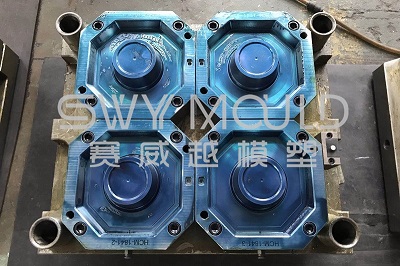

USING SCIENTIFIC MOULD-MAKING TECHNIQUE TO PROVIDE YOU WELL MOULD.
Thin wall injection molding is increasing in popularity […]
Thin wall injection molding is increasing in popularity as material costs continue to rise and delivery lead times are squeezed. Thin wall molding offers the opportunity to reduce material part cost and to increase production output through faster cycle times.
Benefits of thin wall parts:
*Low material cost per part
*Low electricity cost per part due to fast cycle time with hydraulic machines
*Higher production output due to fast cycle times
Minimizing wall thickness is the key to making lighter parts and improving production outputs. A thinner wall section allows shorter cooling time and cycle time.
Challenges of thin wall injection molding:
*High Capital Investment
Thin wall molding requires injection molding machines that have the ability to generate high injection speeds, high injection pressures, are repeatable, and are rigid enough to be reliable for the long term. These machines are expensive.
Similarly, the injection mold needs to be strong enough to withstand high cavity pressures, clamp tonnages, and production rates.
A poorly designed mold will break very quickly.
The mold cooling system design must be optimized so that heat is extracted quickly. Just having thin walls on a part is not enough to get fast cycle times.
Expect to spend substantially more on both machines and molds compared with general-purpose molding. You simply have to spend the money to get long term reliability and quality. If you skimp on price then you will get ongoing quality issues and machine breakdowns.
*Steep Learning Curve
Thin wall injection molding requires new technology machines that have a multitude of control functions. Learning about the machine and all of its functions will allow you to get the most out of it.
What's more, process parameters play a vital role in successful thin wall molding. To produce quality parts the process needs to be fine-tuned as the operating window for parameter settings is very narrow. Some parts require injection times of 0.1 seconds and any variation in this time will cause part quality problems such as flashing or short shots. Parts with thicker wall sections have a much bigger operating window and are easier to mold.
Often robots are used to remove and stack parts in thin wall molding. This is especially common in food packaging. Learning how to use the robot effectively is another area that must be mastered.
Because molds for thin wall parts are made with very tight tolerance, mold maintenance needs to be done daily. Any build-up of residue across the venting surfaces will result in part quality issues, especially on multi-cavity molds.
Finally, learning how to troubleshoot effectively is necessary. Even if you have high-quality equipment and have well-trained people there will still be quality issues. Thin wall molding magnifies the smallest faults in a mold, a machine, or in wrong process parameter settings.
Example of process parameters for a thin wall mold:

*Part description: 500ml thin wall bowl
*Wall thickness: 0.45mm
*Raw material: PP 40mfi
*Mould cavity: double cavity
*Valve gate: Husky
*Hot runner: Husky
*Injection time: 0.2 second
*Injection pressure: 1400 bar
*Hold time: 0.5 second
*Hold pressure: 700 bar
*Cushion: 3mm
*Cooling time: 0.8 second
*Opening time: 1.6 seconds
*Closing time: 0.9 second
*Plasticizing time: 1 second
*Clamping tonnage: 230T
*Cycle time: 4 seconds
Taizhou Saiweiyue Mould & Plastic Co., Ltd.